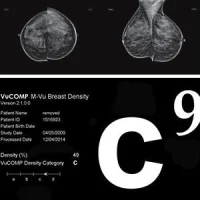EOS imaging (Euronext, FR0011191766 – EOSI), the pioneer in 2D/3D orthopedic
medical imaging, today announced that the Department of Orthopaedics and Traumatology at the
Chinese University of Hong Kong (CUHK) is the first hospital in Hong Kong to install the EOS® system.
Since its founding in 1982, the mission of CUHK’s orthopedics department has evolved into a
commitment to provide the highest quality service in patient care, research and education. The
department’s clinical work and research is considered among the best and has been published in more
than 54 international medical journals, contributing to CUHK ranking among the top 100 medical schools
in the world, according to Thompson Reuters’, “Times Higher Education World University Subjects
Rankings”
i .
The university’s decision to adopt an EOS® system was guided by the orthopaedic department’s
emphasis on patient care and a strong commitment to ensure surgeons use industry leading equipment
and innovative surgical planning and modeling services.
Marie Meynadier, CEO of EOS imaging, said, “The Chinese University of Hong Kong is ranked as a leading
university for orthopedic care in Asia and we are thrilled by their decision to adopt EOS®
for their
diagnosis, planning and control imaging. This new installation will strengthen our growing presence in
the important Asia-Pacific market where we are investing to deploy our technology.”
The EOS®
system provides full-body stereoradiographic images of patients in functional positions, in
both 2D and 3D. EOS exams require a radiation dose 50% to 85% less than Digital Radiology and 95%
less than basic CT scans. The new EOS Micro Dose option, recently cleared by the Food and Drug
Administration, allows a further drastic step towards the ALARA principle (As Low As Reasonably
Available) by bringing pediatric spine follow up exams at the dose level equivalent to a week of natural
background radiation on Earth.
Source credit: EOS imaging
Latest Articles
2D imaging, imaging, Digital Radiology, Low Dose 2D/3D Imaging
The EOS® system provides full-body stereoradiographic images of patients in functional positions, in both 2D and 3D. EOS exams require a radiation dose 50% to 85% less than Digital Radiology and 95% less than basic CT scans







